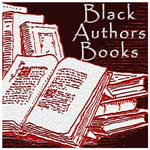It’s official. It’s now cool to be an indie. “Cool” meaning we are no longer looked down upon because we self-publish our work. By no means am I implying that we are better in any sense than traditionally published authors. I don’t buy into the “indie” vs. “traditional” mindset. We are all scribes, and now thanks to the advances in technology, we all have more ways to get our books to the people who count: readers.
If you’ve been paying attention to the publishing industry lately, you may have read about this change in perception toward self-pubbers. Authors Amanda Hocking, J.A. Konrath and John Locke have had tremendous success indie publishing. Konrath has been traditionally published, but there are many others including Hocking and Locke who have not. Some of Konrath’s colleagues have followed his example.
International best-selling author Barry Eisler turned down a half a million dollar deal with St. Martin’s Press, opting to self-publish. NY Times and USA best-selling author L.A. Banks stepped into the self-pub arena with her YA novel, “Shadow Walker.” Christian authors, Tiffany L. Warren, Sherri Lewis, and Rhonda McKnight teamed up to form their own press, 3 Sisters Books. They released their first book, “A Woman’s Revenge,” last year. These examples and many others have been hailed throughout cyberspace as the “indie revolution.” Authors no longer need literary agents and publishers to act as “gatekeepers.”
Mind you, this so-called revolution is barely a year old. When I self-published my non-fiction book, “The Spiritual Root of Slavery,” in early 2010, I did it the old-fashioned way. I sent the manuscript and cover design to a printer and paid a couple of hundred dollars for a short print run. At that time, traditional publishing was still the goal for aspiring writers, and self-pubbers were still hoping their sales would attract the attention of a literary agent. Not so much anymore.
Writers are gleefully indie publishing their own works. Traditionally published authors are putting their out-of-print back lists up on Kindle, Pubit and Smashwords. They are celebrating this new found sense of control. Now, they have a say in everything from the cover design, trim size and price to the simple pleasure of writing what they want. Would you like to do a sequel? Oh, yes… Would you care to take this character from your novel and use her in the short story you are writing for e-publication? Sure, why not…
New authors are hiring editors, copy-editors, cover designers, and typesetters to whip their manuscripts into shape. Many are learning to perform these tasks on their own, and saving money in the process. In addition to e-pubbing projects, U.S. authors can use Create Space and Lightning Source to produce the print versions of their masterpieces. U.K. scribes can also use Lightning Source and Xin Xii (for e-books)
The genres that are selling well as e-books thus far include thrillers, mysteries, erotica, horror and romances. It would be interesting to see if literary fiction, children’s books, and my personal favorite, historical fiction does as well.
So, if you’re an indie. Be proud. You’re in good company. True, not all of us will pull in the money that some of the above mentioned authors have. However, seeing your work in print is a huge reward in itself. And now you can. It’s a lot easier to do than ever before.
Another phrase that is going around cyberspace and echoed by commentators on various indie blogs is this: It’s a good time to be a writer. And it’s now cool to be an indie.







0 comments:
Post a Comment